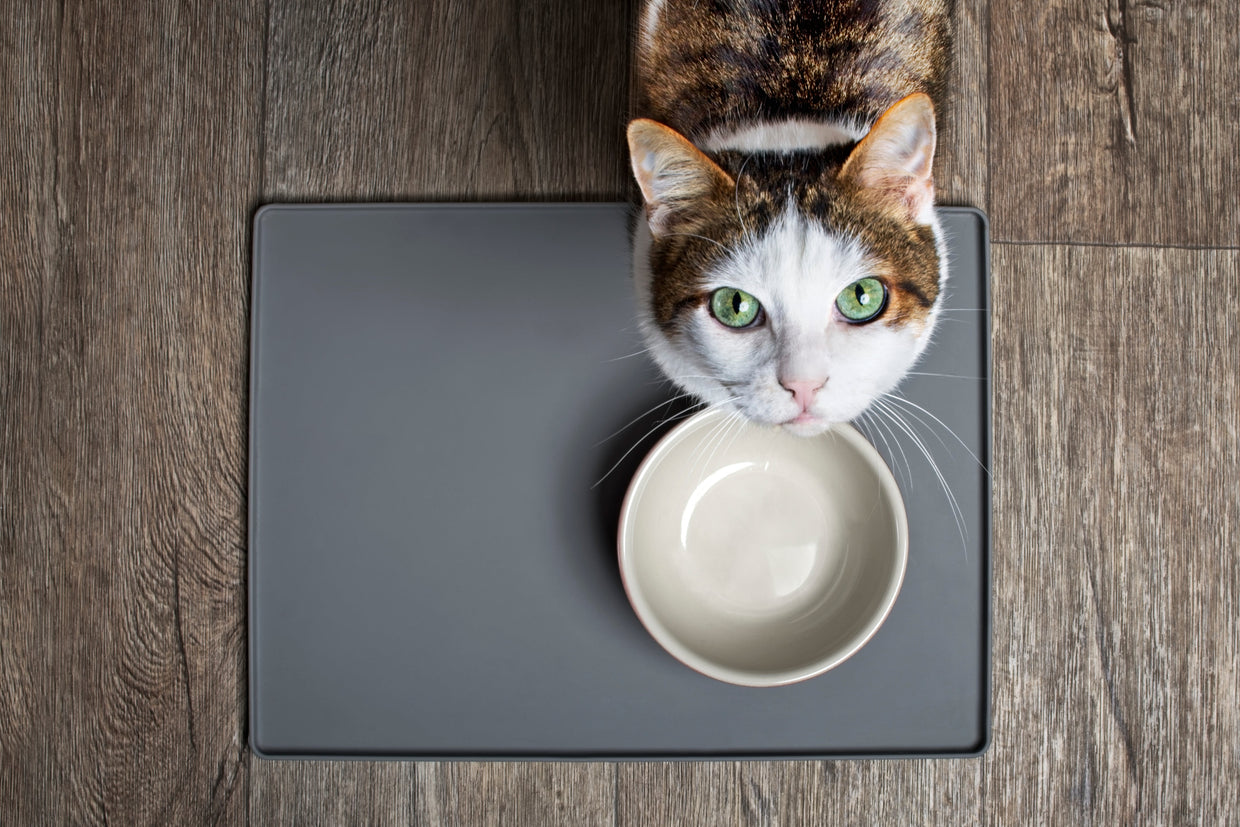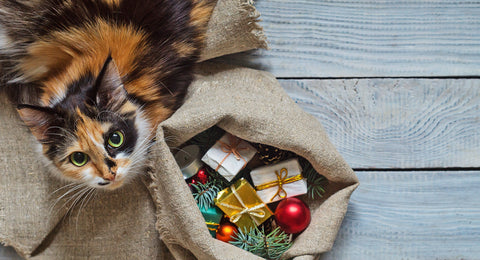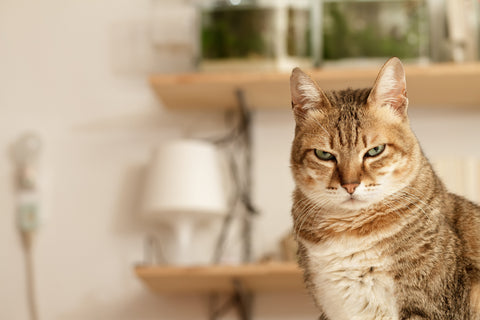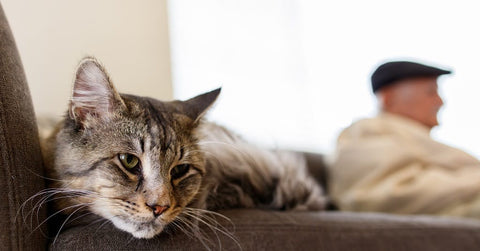

Signs of dehydration in a cat
With sunshine and warm weather setting in, we’ve all been enjoying the opportunity to soak up some much-needed Vitamin D. However, with hotter temperatures come important considerations for our pets—such as ensuring they stay well-hydrated.
In this post, we're exploring the topic of cat dehydration—its signs, causes, and tips for prevention.
What is dehydration?
Put simply, dehydration occurs when the body loses more fluid than it takes in and lacks sufficient water and other fluids to carry out its normal functions.
Dehydration can significantly impact your pet's well-being, influencing everything from circulation to cat digestion.
Cat dehydration symptoms
Look out for these indications that something may be amiss:
- Dry gums and teeth – Gently press your finger to your cat’s gums; the colour should change from white to pink within one or two seconds.
- Thick or foamy saliva
- Lack of energy
- Reduced skin elasticity – Gently pinch the excess skin between your cat’s shoulder blades; it should snap back within one second in a well-hydrated cat.
- Loss of interest in food
- Panting
- Sunken eyes
- Hard and dry stools
In more severe instances, your cat may exhibit signs of dizziness and vomiting, and in some situations, this can even progress to seizures.

Causes of dehydration in cats
Why do cats get dehydrated? If you own both a cat and a dog, you might have noticed how little interest your cat shows in drinking water compared to your canine companion, especially if your cat eats wet food. Cats often have a lower urge to drink, making them more susceptible to dehydration.
Common causes of dehydration in cats include:
- Overheating
- Vomiting
- Diarrhoea
- Fever
- Blood loss
- Metabolic conditions
Top tips for preventing dehydration in your cat
Keep water clean and accessible
Cats are fussy creatures, so ensure their water looks appealing and is easy to access. Consider the type of bowl you use; it should be squeaky clean. Some cats prefer lower, shallower bowls where their whiskers don't touch the sides.
Check the placement of the water
It's important to position your cat's food and water bowls well away from their litter tray. Cats will refuse to drink from a source near their toileting area to avoid cross-contamination. Many cats also prefer to drink in a different place from where they eat, so why not place an extra water bowl in a separate room from their food dish?
Try a ‘cat tap’
Cats often love drinking from flowing water sources, a trait inherited from their wild ancestors. Consider investing in a 'cat tap' or 'cat fountain' to encourage more water intake.

Think about their food
One way to increase your cat's water intake without them drinking more is to use their food. Wet food has a higher moisture content than dry food, so it will increase their overall water intake.
Speak to your vet
If your cat is reluctant to drink or is showing worrying signs like vomiting, it's important to consult your vet as soon as possible. Read more about how to tell if your cat's unwell.


